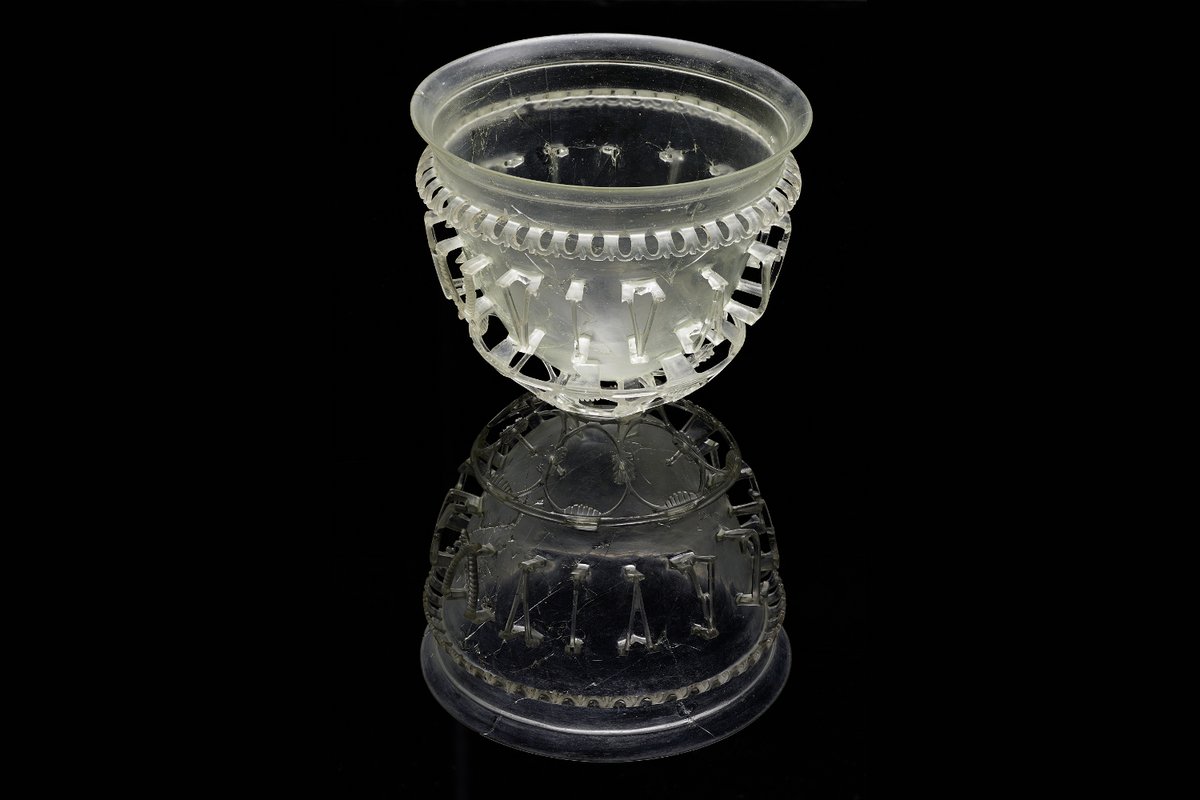Investigation into the production technique of late Roman cage cups
One of the central questions of the project is the production technique of this material group, which is still the subject of controversy. In order to promote the objectification of this debate, but above all to deepen and expand our knowledge of the manufacture of the cage cups on the basis of new, more detailed findings, fragments from our own collection, from Trier (Trier Saarstraße, Nikausstraße, Kaisertherme and Konz), Czéke Ceijkov (today in the Kunsthistorisches Museum Vienna), Dülük Baba Tepesi/Doliche, Turkey (shards of three different, dichromatic vessels) and from the Leibniz-Zentrum für Archäologie (LEIZA) were examined in the restoration workshops of the LEIZA in Mainz. At the end of 2012, a cooperation for the restoration and conservation of the cage cups from the warrior tomb in Taraneš, Macedonia, was agreed and successfully carried out, together with a study of the techniques involved in their production. In 2017, a cooperation project with the Archaeological Institute and Museum of the Bulgarian Academy of Sciences and the Historical Museums of Sofia and Yambol examined the four cage cups from Bulgaria known at that date. In 2021, at the request of colleagues from the Institut National de Recherches Archaéologiques Préventives (Inrap), a unique opportunity arose to restore and technologically examine a cage cup that had been newly found and was almost completely preserved, albeit heavily fragmented.
Being systematic and thus open to comparison, the investigation of previously known glass will significantly promote current research and remains a desideratum in the study of Roman glass technology. In the course of the work carried out in recent years, a comprehensive catalogue of criteria was drawn up as a basis for this and funding for the conception of an open-access database was obtained from the eHeritage programme of the Federal Ministry of Education and Research (BMBF). Such a database was not only to provide all interested parties with easier access to research data spanning almost two centuries, but was also designed to be continuously expanded with newly acquired data. Practical user tools were to ensure better analysability of the available data. Unfortunately, there came a point at which the implementation of this concept was no longer thought desirable.
In the current research, standardised tests are to be used to go deeper into different aspects of the cage cups. In this way, precise, specific groups of objects can be formed, which in turn can provide information about central questions of production (was there more than one technique of production? What development took place between the first and fourth centuries? Do individual glasses have to be classified in a more chronologically differentiated way than previously assumed? etc.).
A further aim is to establish a spatial classification not only on the basis of the find sites, but also, and in particular, for the manufacture of the jars. This could help answer the question of whether, for example, highly specialised glassmakers produced at fixed locations or whether it was a matter of travelling specialists who practised their art at different places.
Another aspect of the research project is the scientific investigation of the composition of the materials. It is hoped that the results will make possible a more precise assignment of finds to specific raw glass production sites in antiquity, which in turn supplied only the few highly specialised glassmakers or refiners.
The necessary scientific investigations (e.g. XRF or ICP-MS analyses) of the trace elements in the glass matrix can be carried out in Mainz.
Without doubt, cage cups can be described as “luxurious high-tech products”. Especially in contrast and in comparison to Roman everyday and utility glass, they can therefore make a small but valuable contribution to our knowledge of Roman glass technology and technology transfer, as well as to distribution structures and other market mechanisms.
- Copy link
- Print article
Contact
- Katja Broschat
- +49 6131 8885-0
Team
- Dipl.-Ing. (FH) Sonngard Hartmann
- Dipl.-Ing. (FH) Guido Heinz
- Michael Ober
- Dr. Constanze Höpken
- Georgi Iliev
Project Period
- Since 01.2011
Support
2017 Förderung im Rahmen des ‚eHeritage‘-Programms des Bundesministeriums für Bildung und Forschung (BMBF)- Archäologisches Institut mit Museum der Bulgarischen Akademie der Wissenschaften
- Historic Museum Sofia
- Historisches Museum Yambol
- Kunsthistorisches Museum Wien
- Mazedonisches Nationalmuseum, Skopje
- Rheinisches Landesmuseum Trier
- Hochschule Mainz, i3mainz - Institut für Raumbezogene Informations- und Messtechnik
- Institut National de Recherches Archaéologiques Préventives
- K. Broschat / C. Höpken / C. Fossurier / N. Tisserand, The Saint-Pierre-l'Estrier cage cup. 2023, Festschrift, eingereicht.
- K. Broschat, A Glint of Light on Broken Glass – A ‘Hot’ Repair on a Late Roman Cage Cup from Autun, Journal of Glass Studies 64, 2022, 269-273.
- K. Broschat / M. Surbanoska / S. Greiff, Der Taraneš-Becher: Neue Informationen über einen alten Fund. Journal of Glass Studies 59, 2017, 101-116.
- K. Broschat, Open-Access Database for Roman Cage Cups Planned. Journal of Glass Studies, Bd. 58, 2016, 294-295.

![[Translate to Englisch:] [Translate to Englisch:]](/fileadmin/_processed_/7/f/csm_Abb_02_Yambol_cage_cup_1__8046bc76ee.jpg)
![[Translate to Englisch:] [Translate to Englisch:]](/fileadmin/_processed_/9/8/csm_Cage_Cup_PH_2014_0810_000_12f72c2464.jpg)
![[Translate to Englisch:] [Translate to Englisch:]](/fileadmin/_processed_/8/c/csm_Cage_Cup_PH_2013_00497_82d8809c3d.jpg)
![[Translate to Englisch:] [Translate to Englisch:]](/fileadmin/_processed_/1/0/csm_VergleichZeichnungenkorrekt_24afb1120f.jpg)